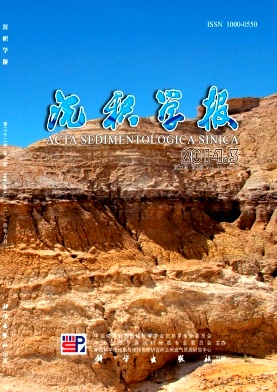Textural Types and Origin of the Cambrian-Ordovician Dolomite in the Central Tarim Basin
- Received Date: 2013-10-24
- Rev Recd Date: 2014-02-21
- Publish Date: 2014-06-10
-
Key words:
- Tarim Basin /
- Cambrian-Ordovician /
- dolomite /
- texture /
- geochemistry /
- dolomitization /
Abstract: The study of the dolomite texture, as the foundation of dolomitization analysis, not only indicates the origin of the dolomites but also controls the dolomite reservoir quality significantly. The main objectives of this paper are to investigate the dolomite texture types and origin of the Cambrian-Ordovician dolomite in the central Tarim Basin, based on the analysis of the core, thin-section, SEM, cathodoluminescence and C-O-Sr isotope, as well as the widely used terminology for dolomite texture in international academic circles. The results show that there are two types of replacement dolomite: one is the dolomite with well-preserved precursor lithologic fabric that can be subdivided to micritic dolomite and (relict) dolo-grainstone, the other type is the crystalline dolomite, including fine crystalline, planar-e(euhedral) dolomite, fine crystalline, planar-s(subhedral) dolomite and medium to coarse crystalline, nonplanar-a(anhedral) dolomite. Additionaly, two types of void-filling dolomite cement have been observed that are very fine to fine crystalline, planar-e(s) dolomite void-filling and medium to coarse crystalline, saddle dolomite void-filling, respectively. Different texture types of the dolomite indicate that the diagenetic environments and formation processes of the dolomite are various. For the study area, the dolomite with well-preserved precursor fabrics is associated with the mimetic dolomitization during the penecontemporaneous period. Abundance of high-supersaturation dolomitizing fluid is beneficial to the perservation of precursor fabrics. The planar-e and planar-s dolomite are probably formed from reflux of penesaline seawater during early diagenetic stage by the low-temperature dolomitization. Overdolomitization may play a vital role in planar-e crystals transferring to planar-s crystals with decreasing of pore space. The nonplanar-a dolomite is interpreted as the product of high-temperature/hydrothermal dolomitization and recrystallization during the medium or deep burial, the high temperature is the key to cause dolomite crystal boundary transferring to nonplanar-anhedral.
| Citation: | Textural Types and Origin of the Cambrian-Ordovician Dolomite in the Central Tarim Basin[J]. Acta Sedimentologica Sinica, 2014, 32(3): 538-549. |






 DownLoad:
DownLoad: